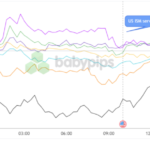
- Book Review Putting a Price on the Irreplaceable: A History of Environmental Economicsby H. Spencer Banzhaf.
HHow do you price a scarce and valuable resource that is not traded in the market? Before you can answer this question, you need to ask the following question: why Do you want to set a price for these resources?
Spencer Banzhaf’s account of the history of environmental economics addresses two of the most pressing questions environmental economists have asked. Putting a price on the pricelessBanzhaf starts with a version of the second question.
The environment is a resource we want to preserve for future generations to use. It is therefore our responsibility to rationally plan its continued use. But it is also a resource worth preserving for its beauty and spiritual enjoyment, even if, or perhaps especially, it has no use. The ideas of conservation first associated with Gifford Pinchot (1865-1945) and preservation first associated with John Muir (1838-1914) are the intellectual orientations that Banzhaf develops in his book. Both approaches share the problem of putting a price on the priceless.
The story Banzhaf tells is one of the development of ideas, and is neither linear nor obvious (especially advance), and a story of tensions and synergies between academia, think tanks and public institutions.
Banzhaf points out that although the term environmental economics was not used until the 1960s and only came into common usage in the 1970s, the problem is older than the name. The development of environmental economics is intertwined with the development of both Pigouvian and Causal understandings of externalities, the public finance tradition, agricultural economics, and especially government and the military.
“Cost-benefit analysis works well when the costs and benefits are balanced. But what happens when the benefit or cost is the environment itself?”
When governments have to make a policy, they are faced with the problem of understanding whether that policy is worthwhile. But how do we know? Cost-benefit analysis works well when there are comparable costs and benefits. But what if the benefit or cost is the environment itself? Or nature? Or outdoor recreation? Can we measure how far people are willing to travel to be outdoors? Can we reliably ask people how much they value the outdoors? Or how much they would be willing to pay to keep it from being destroyed? What if we could compensate people who face costs? What if we could potentially only compensate people who face costs? What incentives would people have to tell the truth? Or what if high prices caused by increasing scarcity encouraged the discovery and use of substitutes?
Environmental issues became even more pressing during the Cold War. One problem was ensuring there were enough resources to withstand the threat of Communism. Conservation and “efficient management” became priorities, especially in terms of water resources. It was difficult to find a way to estimate the value of the losses caused by dams to nature, much less to human life. The backlash against attempts to put a monetary value on something as seemingly priceless as an individual’s life encouraged economists to think in terms of trade-offs as well as costs and benefits. Thus, rather than simply recommending optimization, some preferred to simply identify trade-offs between things that were incomparable. This allowed the economic profession to present a range of options to policymakers, avoiding unpleasant and unpopular recommendations, since the final decision on what to do would be left to politics. Part of the problem was that optimization outcomes did not always coincide with political outcomes, since concentrated interests trump the dispersed interests of taxpayers and consumers (p. 185). As a result, economists were divided between beliefs in consumer sovereignty and beliefs in political sovereignty, with no clear solution in sight.
So for this reader, this book is a great window into environmental economics and postwar America. It’s certainly a history of environmental economics, but environmental economics developed within economics, and economics developed within postwar American politics. For me, the message of this book can be summed up in the following sentence:
- “Economists came to government to apply their expertise to real problems, but then, at least in part, they lost control of their research agendas and were forced by government agencies to perform such evaluations. Thus, bureaucratic necessity became the mother of economic invention” (p. 229).
For more information on these topics,
The book highlights the complex and unintended entanglements between academic disciplines and political realities.
There’s a lot going on in this book, from the history of cap-and-trade pollution permits and the reasons behind them to its connections to experimental economics. Everything is explained in detail and rigorously documented, as the 40-page bibliography attests. It may not be a book for the general public, but economists and educated people with a strong environmental interest will appreciate the richness of the content and the thoroughness of the story.







